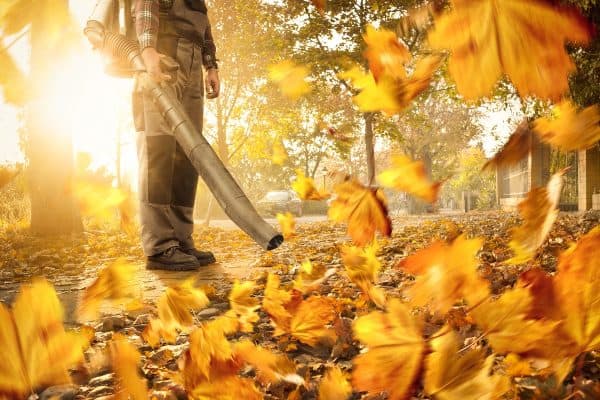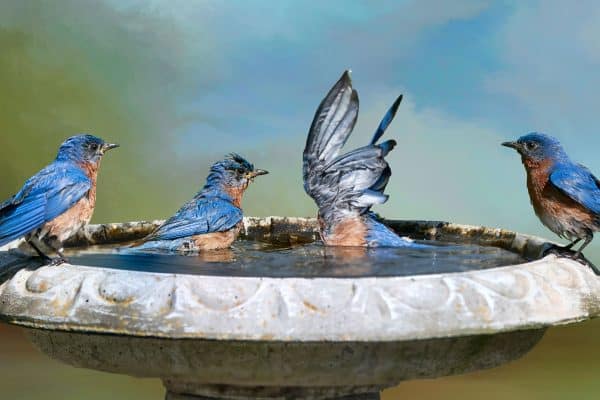Yard and garden landscapes are a great way to enhance and beautify any property. The combination of elements such as plants, rocks, water, wood, and walkways complement the overall appeal of any design. But what's the best way to plant flowers in rock landscaping? We've done the research and have the answers for you!
Plant the flowers so that the base is at least a foot away from the rocks, this will provide adequate space for growth. Choose varieties that thrive well with rock landscapes and add a layer of mulch for soil nutrition and plant health.
In this article, we'll see some of the best flowers to plant in rock gardens. We'll also take a look at the fundamentals of general landscaping and rock landscaping in particular. Read on to learn all about it!
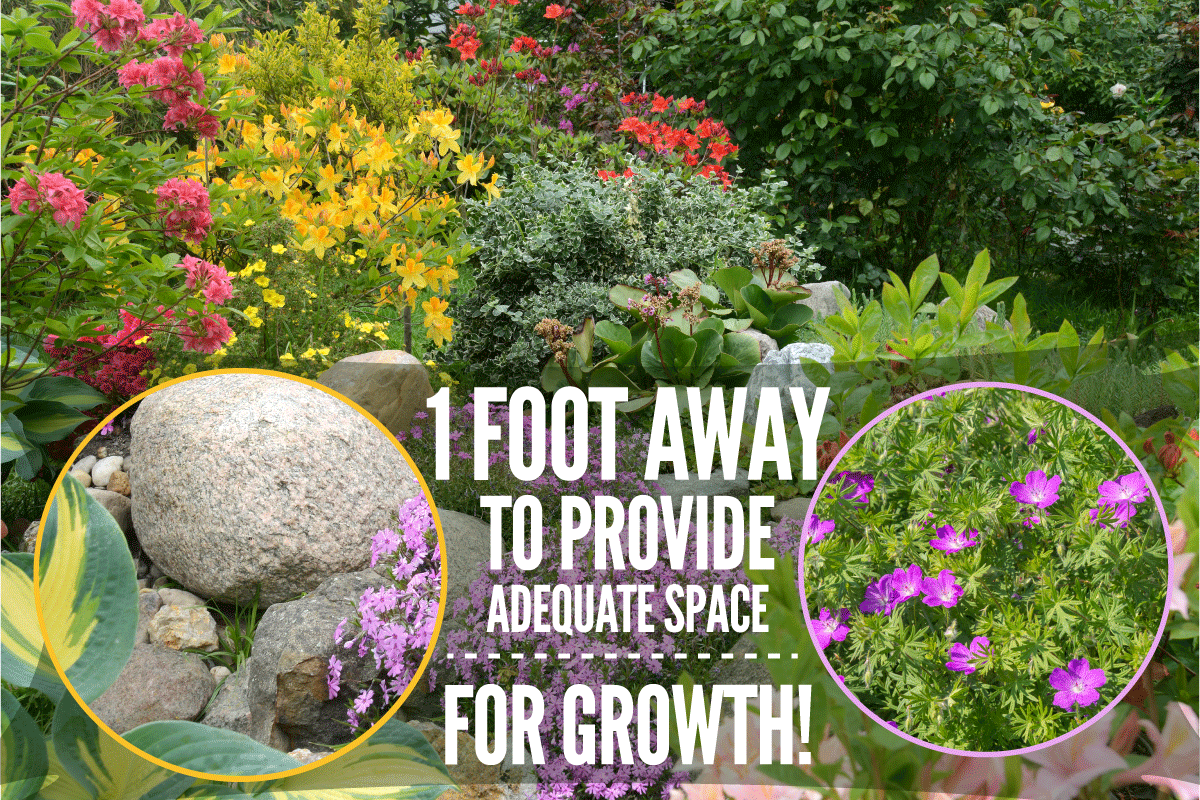
What Flowers Will Grow Well In Rock Landscapes?
We've seen that it's important to provide your flowers with space and choose the right varieties for rock landscaping. But what flowers thrive in rocky environments? We've put together some of the best for you here!
Candytuft
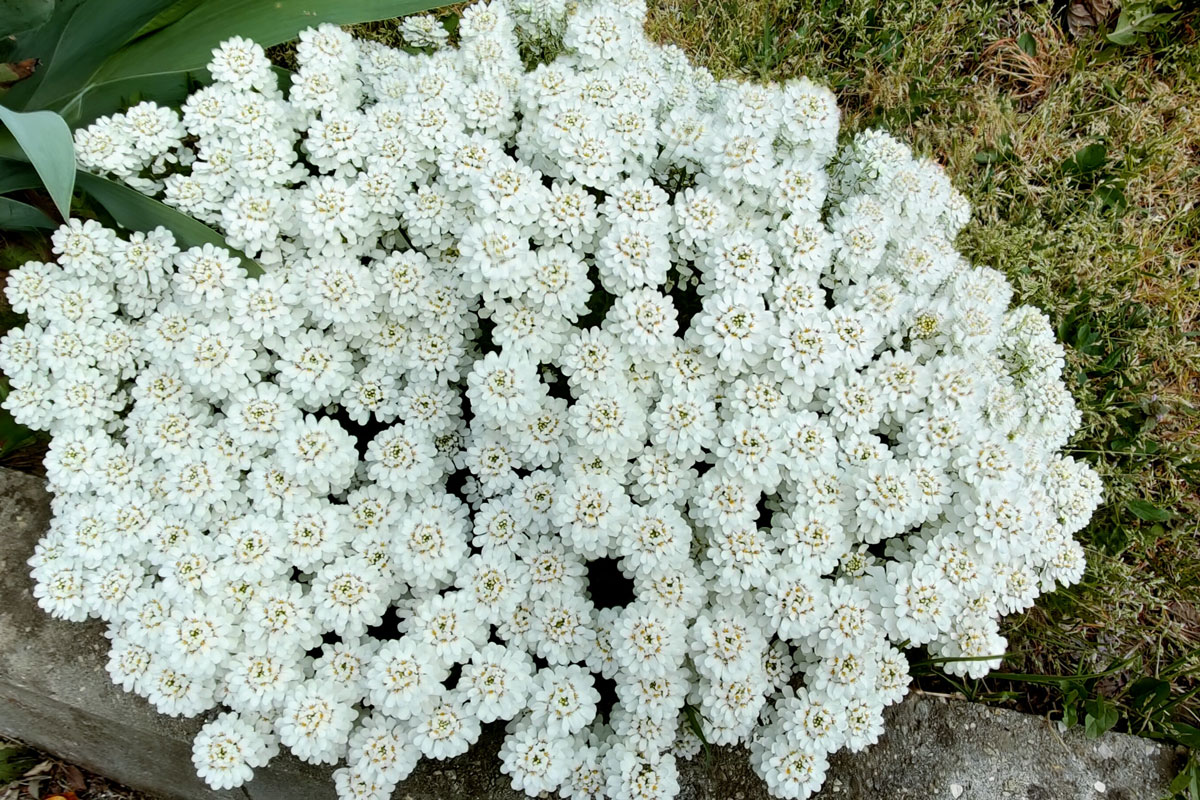
Candytufts are flowering evergreen perennials that produce stunning carpets of white flowers. As the petals mature, the colors fade into light pink. They look gorgeously beautiful spilling over a wall or hanging from pots or baskets.
This plant thrives in well-draining alkaline soil, but it can still grow in gravelly soil, making it ideal for sunny rock landscapes. It is best placed in areas where it can get direct full sunlight.
If you intend to retain the short size of the plant, you will have to cut the stems (ground level) after the blooming period.
Alyssum
Alyssum is commonly referred to as a "basket of gold" due to its clusters of bright yellow flowers. It reaches a height of 4 to 6 inches with a width of 6 to 9 inches.
They can be used as a filler in every nooks and cranny of your rock landscape or gardens, and it serves as a cheerful accent in various situations. It can be placed as a groundcover to inhibit or reduce the growth of weeds. Because of that, it becomes a form of natural mulch that helps in the development of new and taller vegetation.
Alyssum requires at least 6 hours of full sun per day. In warmer or hotter climates, the plant should be placed in partial shade to protect it from the hot afternoon sun.
Sedum Autumn Joy
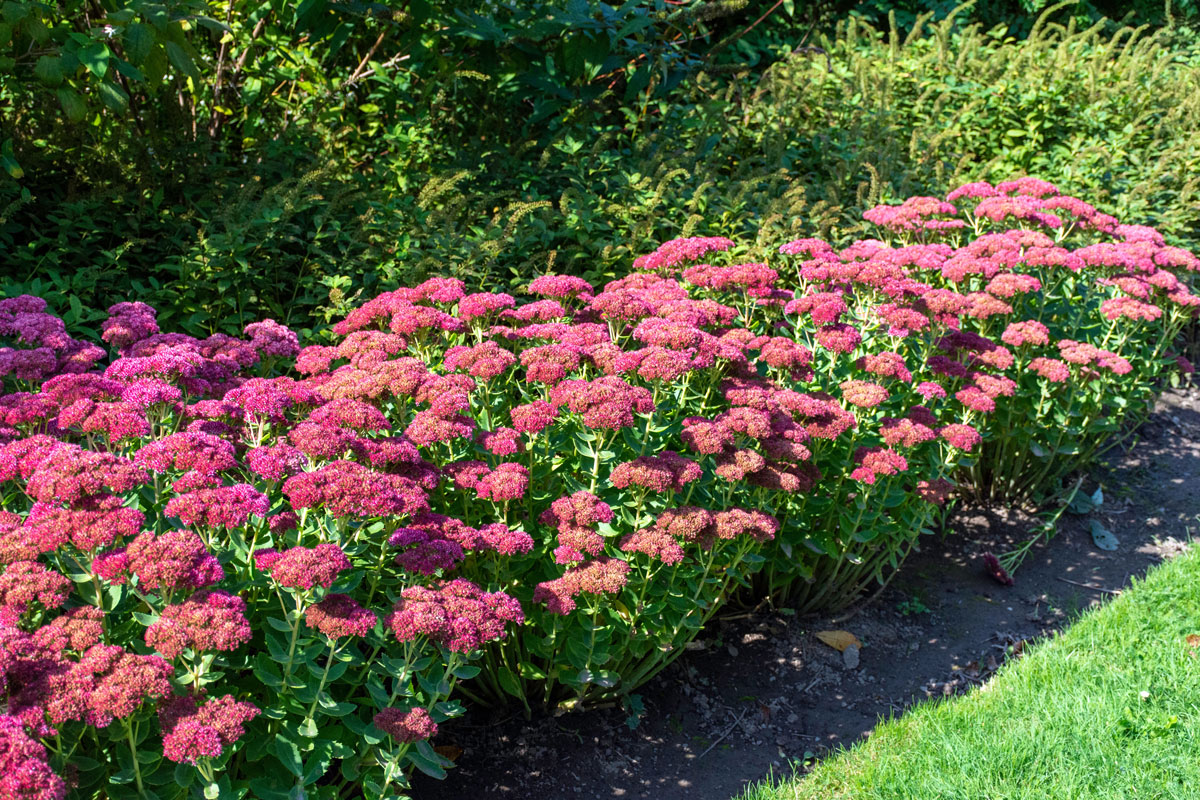
Sedum autumn joy is a perennial that produces deep red flowers. In the summer, pinkish bud clusters adorn the rigidness of a rocky landscape. Bees, butterflies, and hummingbirds are especially attracted to their rich color.
It actually flourishes in conditions where other plants may wilt or die. Once established, the perennial can tolerate drought, however, it can still thrive in regions where rain is rampant.
The best way to grow sedum autumn joy is to plant it in well-draining soil and areas where it can get plenty of direct sunlight. During summer, light watering every two weeks is necessary, however, in the winter or cold season, it does not need frequent watering because it may cause the roots to rot.
Cranesbill Geranium
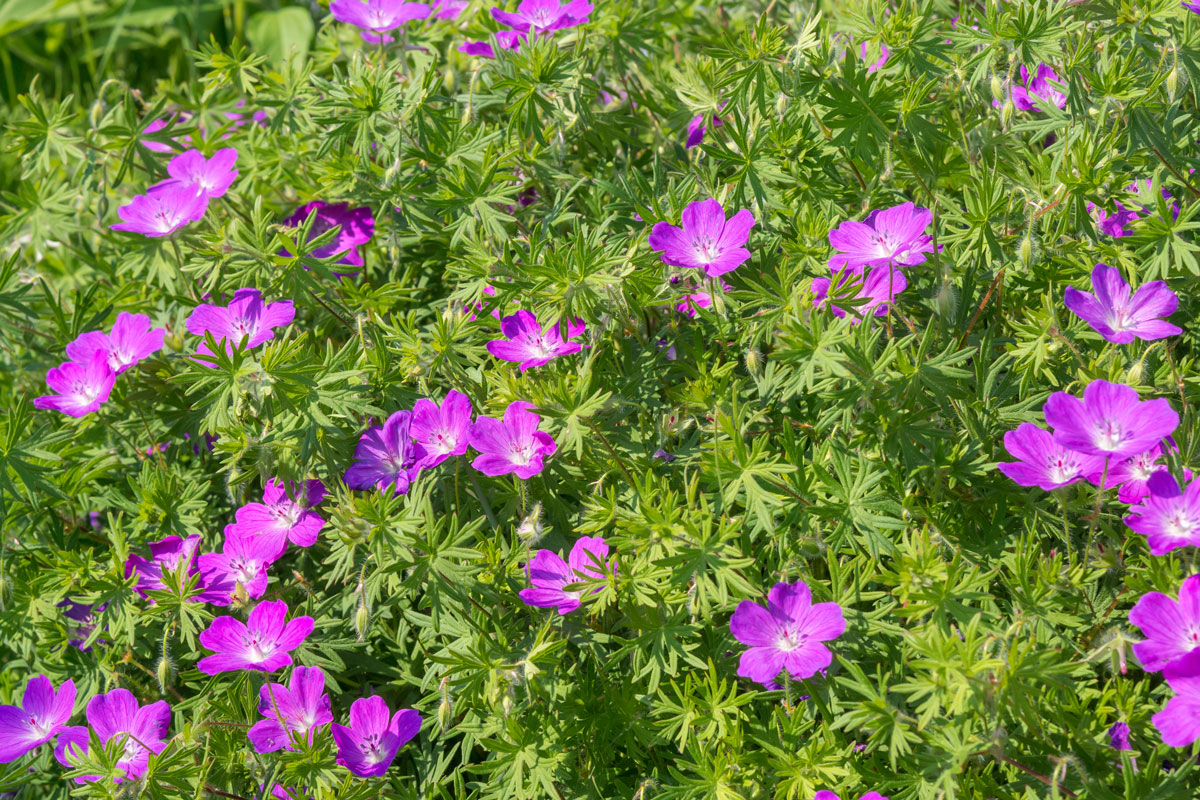
Cranesbill geranium is a species of flowering plant that requires very little maintenance. Purple flowers may bloom if placed in areas where they can receive direct full sunlight. However, it can still tolerate partial shade as long as it gets enough light during the day.
Red Creeping Thyme
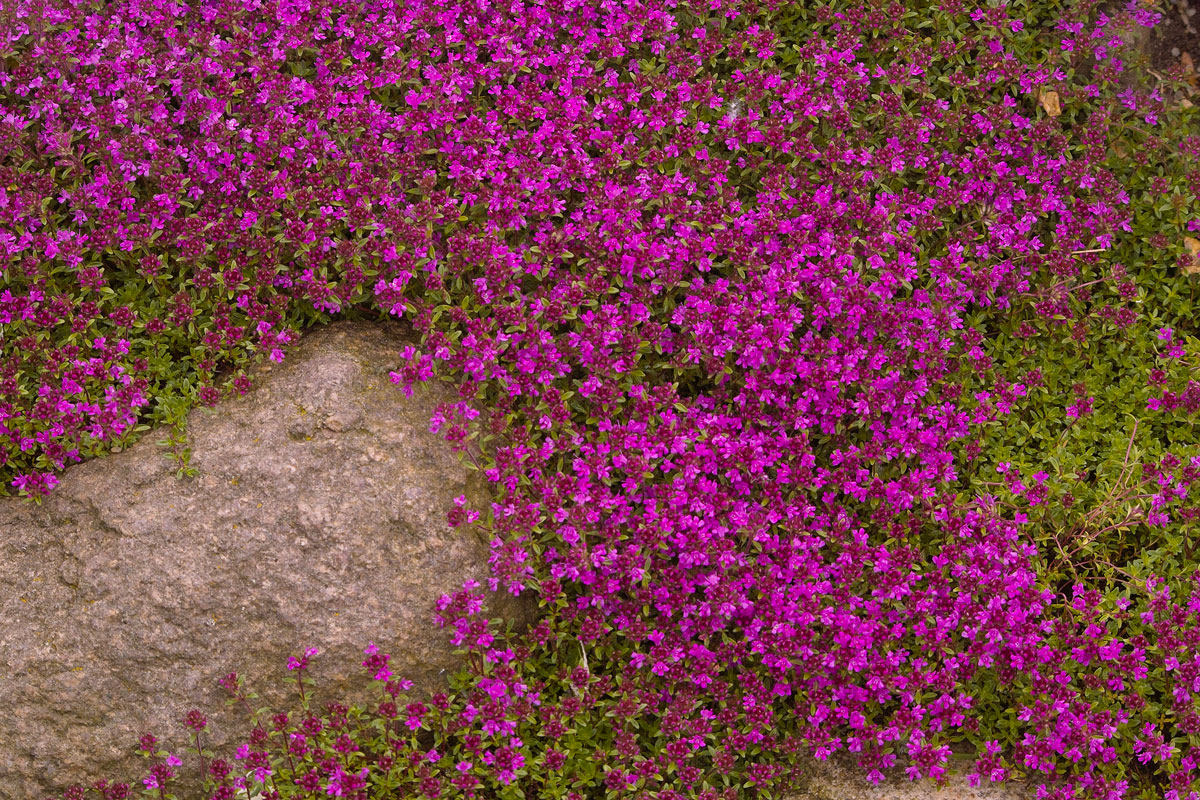
Although named red creeping thyme, this plant yields beautiful fragrant pink flowers. It generally functions as a ground cover that can be placed in between pavers, rocks, and walkways since it can tolerate and endure poor soil conditions and the environment.
Basics Of Landscaping
There are several principles in landscaping that need to be applied in order to create an aesthetic and functional garden. The appearance, as well as the sustainability of the arrangement, depends on the choice, placement, and combination of components of your landscape.
Unity
Unity refers to the theme of a well-planned garden, the primary principle is that the design adheres to a central concept that promotes a single idea. To illustrate, a Japanese landscape features water, bamboo, rocks, and plants that reflect a simple but elegant oriental environment.
Balance And Proportion
A balanced garden features a sense of equality and refers to the relationship between plant height, foliage, and the surrounding structures that support and complement the growth around and between the landscape. For instance, taller plants like trees should be placed towards the back, supplemented by shrubs and accentuated by flowers in the front.
Color
Color affects the depth and dimension of your landscape. The right combination of light, like yellow or white, bright, like red, and cool colors like blue or green create an attractive perspective. While most gardeners prefer to cultivate flowers with different hues, it is your option to use a single color for the entire landscape, this creates a unified and elegant effect.
Contrast
Combining rocks with flowers or driftwood with greenery accentuates both components by contrast. It is an excellent way to emphasize the difference as well as the harmony of both hard and soft elements. Contrast also breaks the monotony of the landscape.
Line
The line demarcates the boundaries that define the borders of your designed landscape. It has to be confined and limited in such a way that the whole area demonstrates spacial definition.
Put simply, the landscape has to have a beginning and an end in terms of content and extent. A garden that has random multiple placements hardly qualifies as a landscaped area.
Transition
If contrast suggests a sudden change, transition is gradual change. This is illustrated by subtle changes in the colors of the flowers, plant size, foliage, and the different supporting elements. For instance, the hues may transition from light to medium to intense from one portion of the garden to the other.
Repetition
A well-planned garden consists of balanced and unified elements that complement each other. Too many components that are not related create a disorganized landscape. Choose a base element, in your case, rocks, accentuate with flowering plants and enhance further with wooden structures or water forms. Minimize the basic composition and simplify the pattern.
Basics Of Rock Landscaping
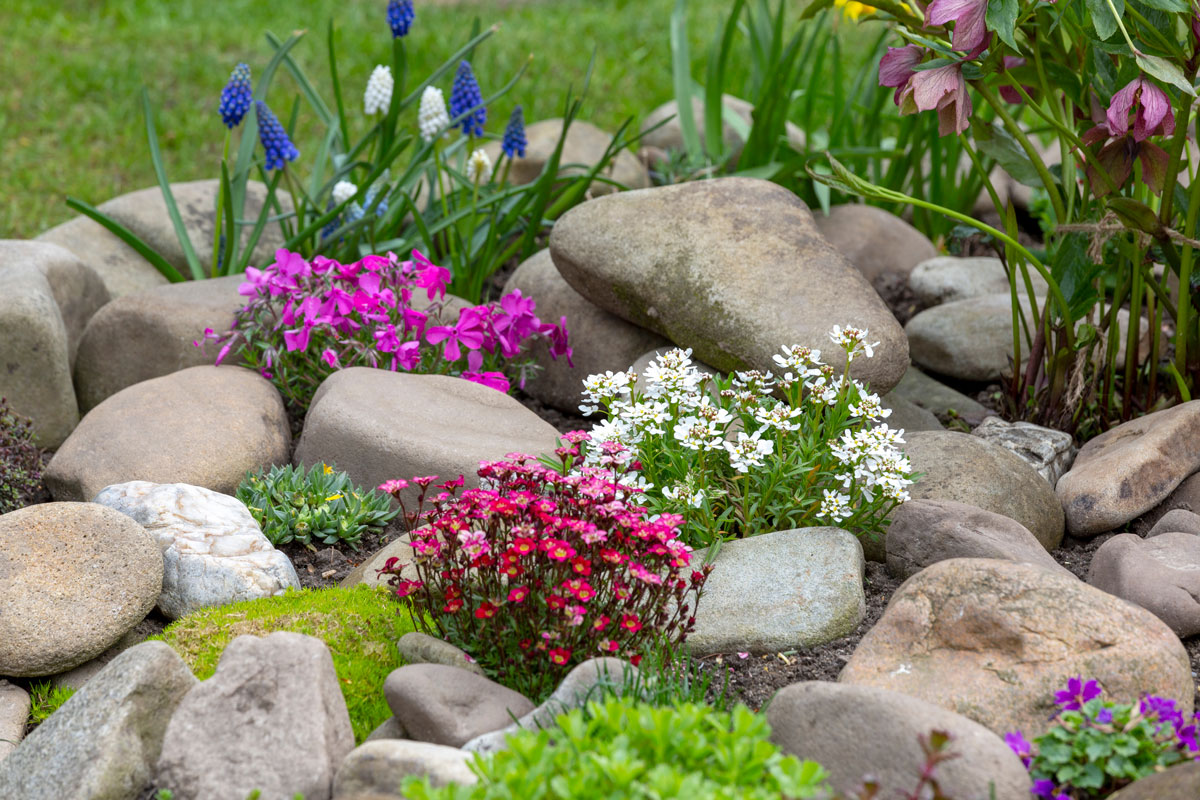
Rock Selection
Rock landscaping includes the use of rocks, stones, gravel, and plants that thrive in this kind of garden setting. Before beginning your project, selecting the right type of rock is essential. The one thing we focus on is the decorative appearance of the material, however, we should concentrate on the function or purpose.
Use strong stones that won't easily crumble or disintegrate. One trick to identify soft stones is to scratch the edges to see if small bits scratch off. Limestone, dolomite, and sandstone are examples of soft stones.
River rock, lava rock, trap rock, granite, and quartzite are the best materials to use since they are considered as hard stones that will last a lifetime.
Use Of A Landscape Fabric
Before placing rocks, plants, and any other decors, you must first place a porous landscape fabric that will prevent rock from getting buried under the soil. It also acts as a barrier that decreases weed proliferation.
A piece of landscape fabric is usually created by weaving strips of thin plastic or by spinning polyester fibers. This material is permeable, meaning water and air can easily move across the sheet and into the soil. Plants can still get the nutrients they need to grow and develop. There are environmentally friendly materials that you can use.
Use only one fabric because the thickness of two or more materials can affect water absorption.

Check out EcoGardener Landscape Fabric on Amazon.
Plants
Plants in general do not thrive in constricted environments such as a rocky landscape, because the stones can get considerably hot and retain that heat. This can cause most greenery to struggle, and some may not even survive the additional heat and humidity.
In order for vegetation to thrive, you must carefully consider the specific plant to use, proper growth, and maintenance. Most shrubs, trees, and evergreens can relatively develop and survive in rock gardens with landscape fabrics. Corals, which are heat sensitive, may wilt and die.
Plant Placement
Strategically place the greenery in areas where it can grow to its mature size without the need for moving and replacing them and, without causing damage to other shrubs and perennials. Before planting, remember to cut holes in the fabric, large enough that it can contain and make room for the plant's growth.
Leave a circumference of bare soil, at least 4 to 6 inches, on the area where you will place the plants. Avoid covering that area with rocks so as to not affect plant growth. You can use organic mulch, but it should be a few inches away from shrubs and trees.
In Closing
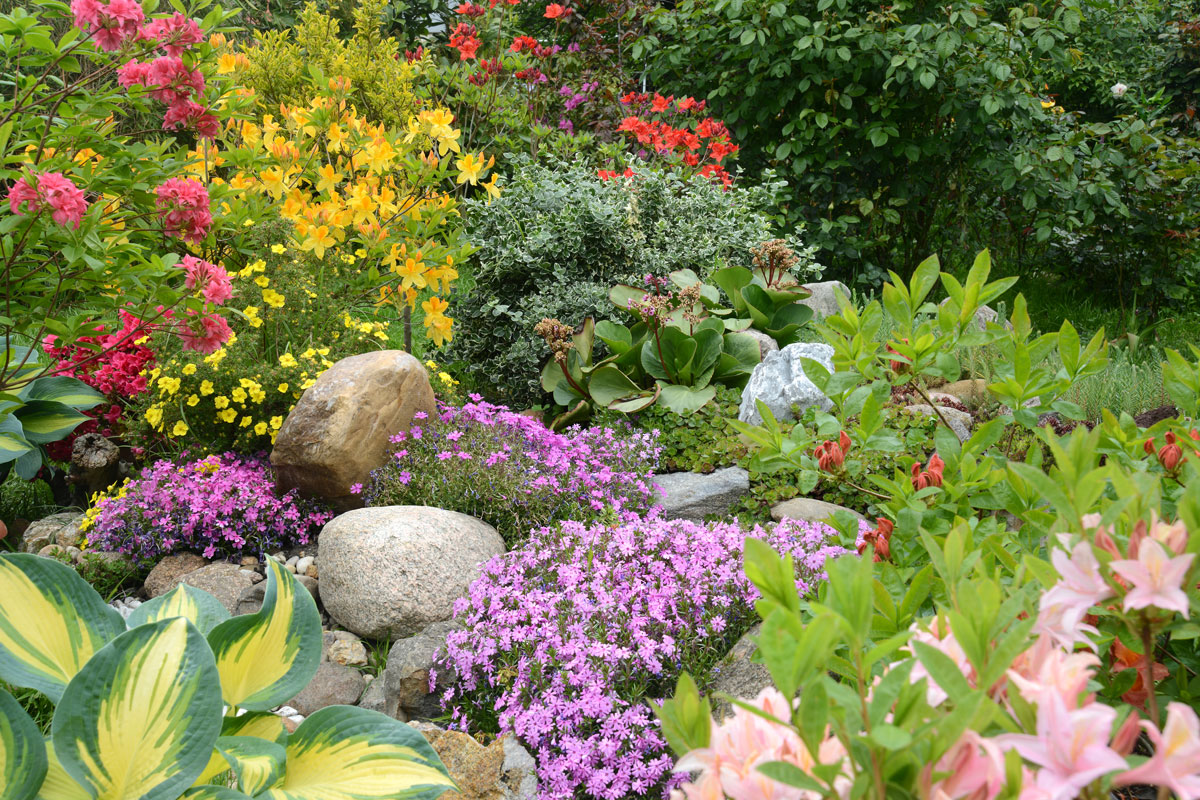
A rock landscape requires a general knowledge of plants, rocks, and the overall environment in order for a functional garden to thrive. We hope this article proved to be insightful.
Now you know more about the basics of rock landscaping and the best types of flowers to plant in your rock landscape. With this knowledge in hand, you'll be ready to make the most of your own landscape! Happy gardening!

![A man using a portable vacuum to collect dead leaves, Will A Leaf Vacuum Pick Up Mulch? [Can It Remove Leaves From Mulch?]](https://landscapingbase.com/wp-content/uploads/2022/09/Man-using-a-portable-vacuum-to-collect-dead-leaves-600x400.jpg)
